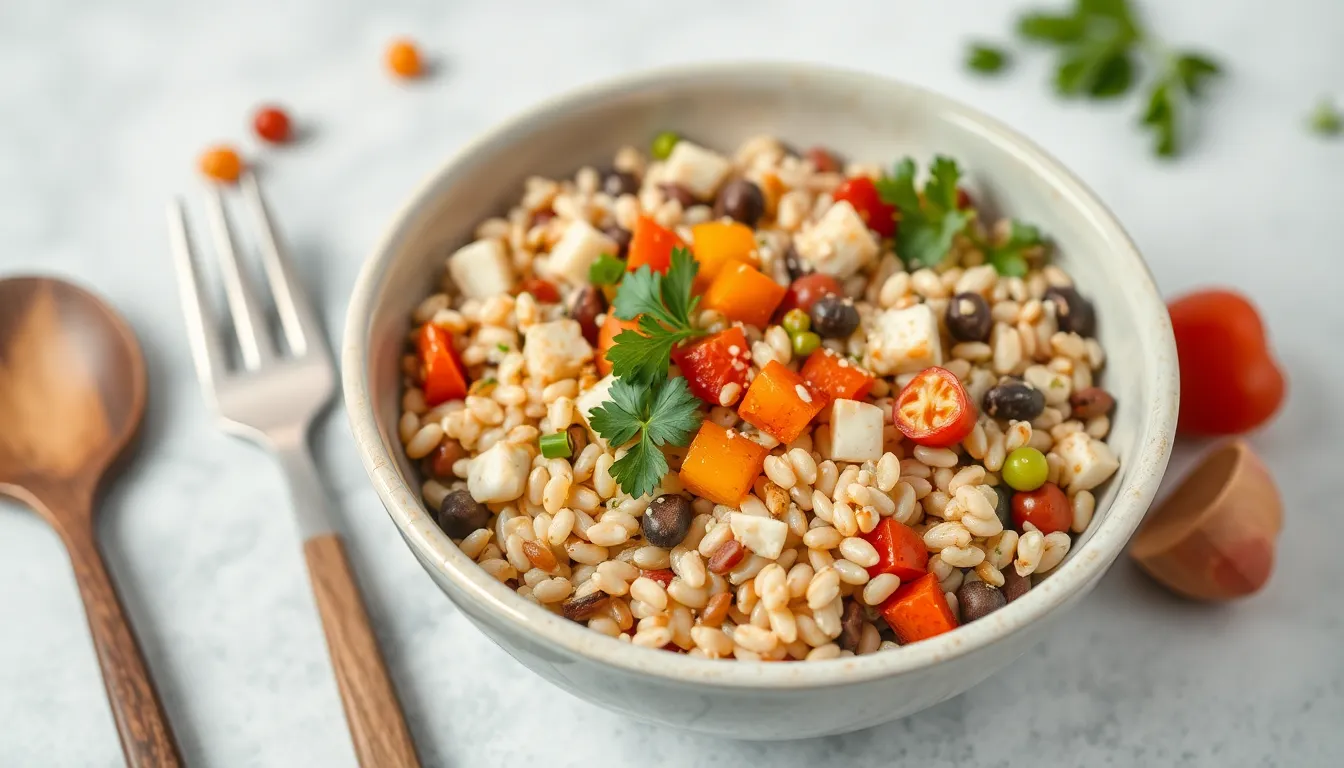How to Make a Grain Bowl with Seasonal Ingredients
Introduction
Grain bowls are becoming increasingly popular as a nutritious and versatile meal option that caters to a variety of dietary preferences. Their structure allows for endless customization, making them an excellent choice for anyone looking to explore new flavors and textures. Moreover, incorporating seasonal ingredients not only boosts the flavor of your grain bowl but also supports sustainable eating practices. In this article, we’ll delve into the art of creating the perfect grain bowl using seasonal ingredients, guiding you through each step and providing delicious combinations to inspire your culinary creations.
Section 1: What is a Grain Bowl?
A grain bowl is essentially a dish that features a base of grains topped with various proteins, vegetables, and flavor-enhancing toppings and dressings. Originating from various culinary traditions around the world, grain bowls have become a staple in many diets due to their rich nutrients and adaptability.
The Components of a Grain Bowl
- Base (Grains): This is the foundation of your grain bowl, providing essential carbohydrates and fiber.
- Protein: A vital component for muscle health, protein can come from both animal and plant sources.
- Vegetables: Fresh or roasted, seasonal vegetables add color, nutrition, and flavor.
- Toppings: Ingredients like nuts, seeds, or herbs elevate the texture and flavor profile.
- Dressings: A drizzle of dressing ties the whole bowl together, adding moisture and flavor.
Section 2: Choosing Your Grains
When it comes to grains, the choices are abundant. Here are some popular options, along with their pros and cons:
- Quinoa: A complete protein and gluten-free option, cooks quickly.
- Brown Rice: A hearty base that is filling but takes longer to cook.
- Farro: Nutty and chewy, farro adds depth to your bowl.
- Barley: This grain is great for adding a slightly sweet flavor but can be time-consuming to cook.
Comparison of Different Grains
| Grain | Nutritional Value (per 100g) | Cooking Time | Flavor Profile |
|---|---|---|---|
| Quinoa | 120 kcal, 4g protein | 15 mins | Nutty |
| Brown Rice | 111 kcal, 2.5g protein | 40 mins | Earthy |
| Farro | 150 kcal, 6g protein | 30 mins | Chewy and nutty |
| Barley | 123 kcal, 2.3g protein | 40-50 mins | Mildly sweet |
Section 3: Selecting Seasonal Ingredients
Using seasonal ingredients not only enhances the flavors of your grain bowl but also helps the environment by reducing the carbon footprint associated with long-distance food transportation. Seasonal ingredients are often fresher and more flavorful, making them a top choice in your culinary creations.
Common Seasonal Ingredients by Season
- Spring: Asparagus, peas, radishes, spinach.
- Summer: Tomatoes, zucchini, bell peppers, corn.
- Fall: Sweet potatoes, squash, Brussels sprouts, beets.
- Winter: Kale, carrots, turnips, citrus fruits.
Tips for Sourcing Local Produce
To ensure you are getting the best seasonal ingredients, consider the following tips:
- Visit your local farmers’ market regularly.
- Join a community-supported agriculture (CSA) program.
- Get to know local farms that offer fresh produce.
- Check out local grocery stores that prioritize local and seasonal ingredients.
Section 4: Building Your Grain Bowl
Assembling a grain bowl is an art form that blends various flavors and textures. Here’s a step-by-step guide to crafting your ultimate grain bowl:
Step-by-Step Guide
- Cook your chosen grain: Follow the instructions specific to the grain you selected. For quinoa, rinse before cooking.
- Prepare the protein: Choose your protein source. Consider options like grilled chicken, marinated tofu, or roasted chickpeas.
- Roast or sauté seasonal vegetables: Toss vegetables in olive oil, salt, and pepper, then roast at 400°F (200°C) for 20-30 minutes or sauté until tender.
- Add toppings: Sprinkle nuts, seeds, or fresh herbs to elevate your bowl.
- Drizzle with dressing: Use a homemade or store-bought dressing to add flavor.
Section 5: Flavor Combinations
When it comes to flavor profiles, the sky’s the limit! Here are some suggested combinations that work beautifully together for each season:
Seasonal Flavor Pairings
| Season | Grains | Proteins | Vegetables | Dressings |
|---|---|---|---|---|
| Spring | Quinoa | Grilled Tofu | Asparagus, Peas | Lemon Vinaigrette |
| Summer | Brown Rice | Chicken | Zucchini, Tomatoes | Basil Pesto |
| Fall | Farro | Roasted Chickpeas | Sweet Potatoes | Maple Mustard |
Conclusion
Grain bowls are an excellent way to embrace seasonal cooking while enjoying a nutritious and satisfying meal. By understanding the components of a grain bowl and exploring various grains, seasonal ingredients, and flavor combinations, you can create a dish that not only tastes great but also supports your health and the planet. So grab your favorite seasonal ingredients and get started on your grain bowl journey today!




